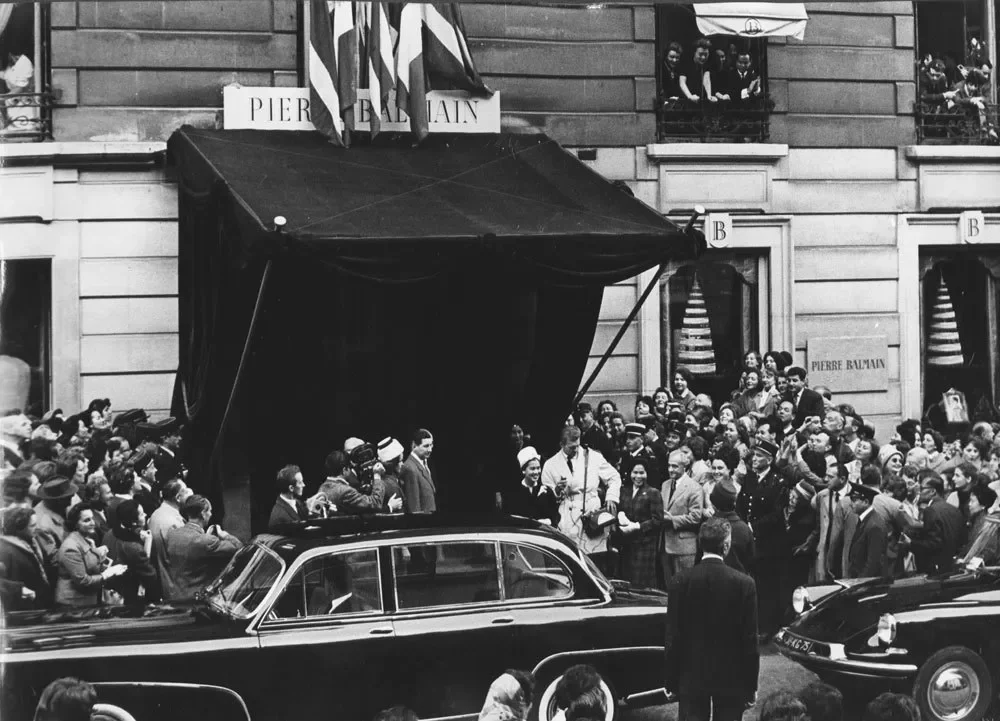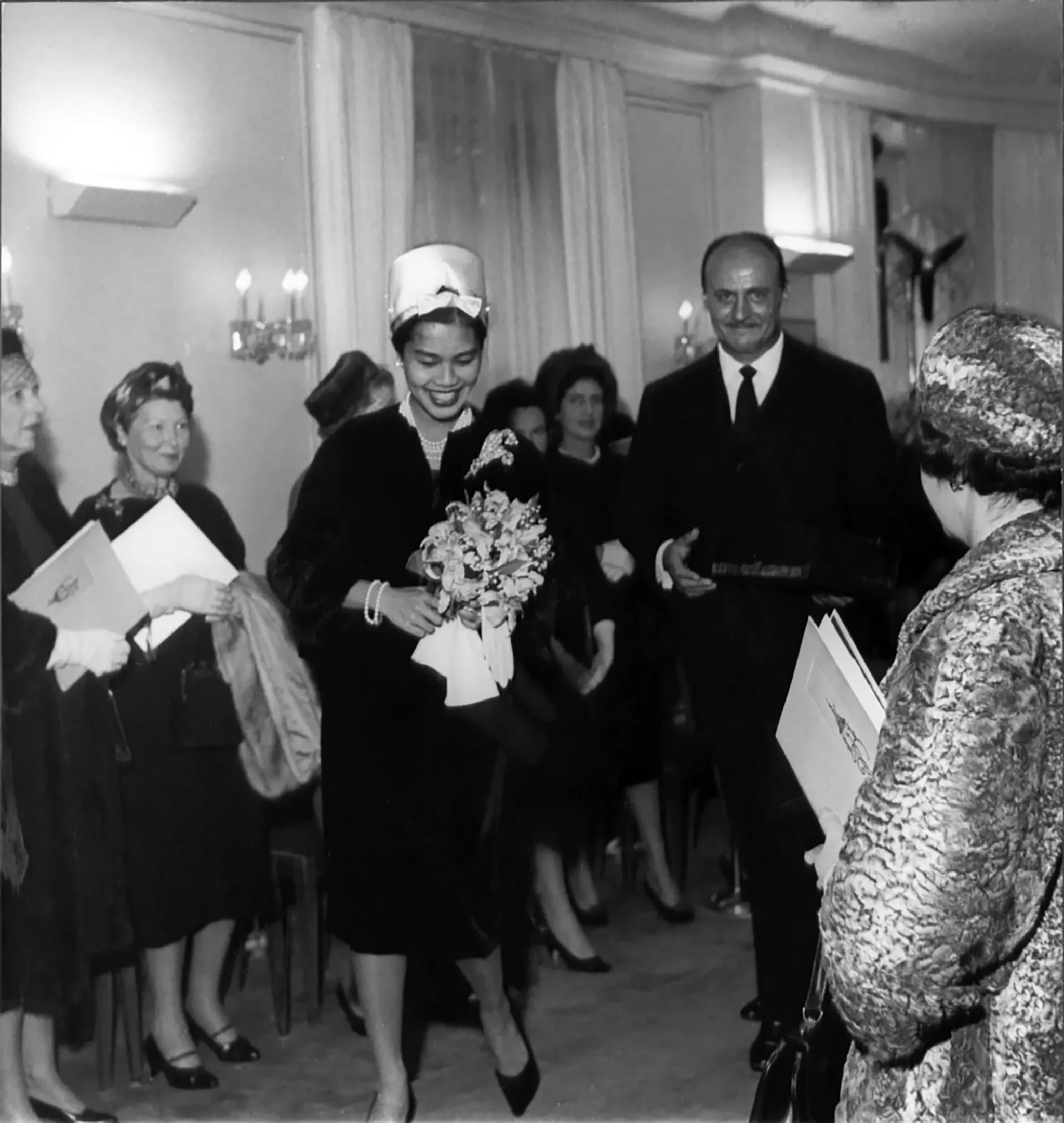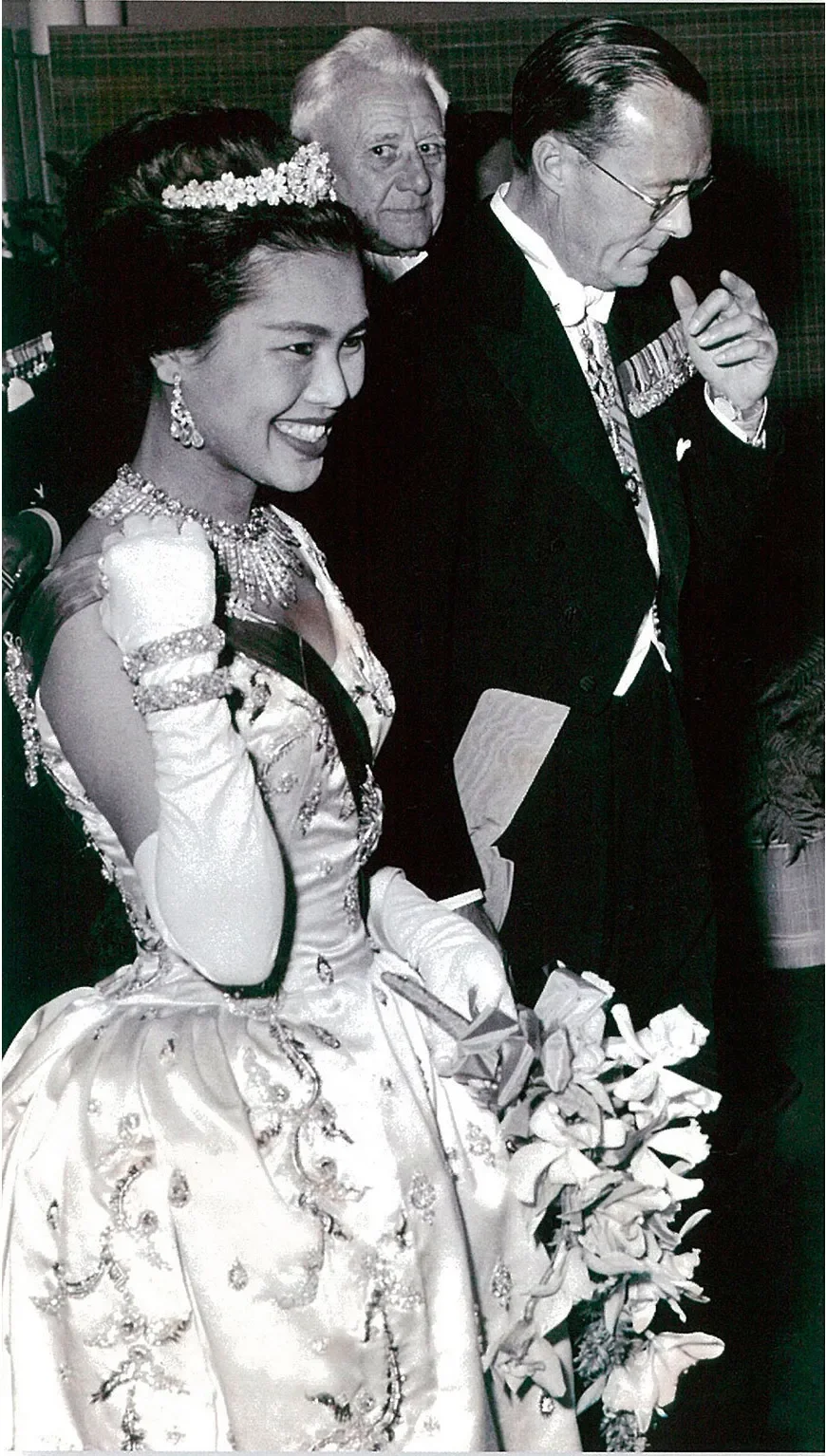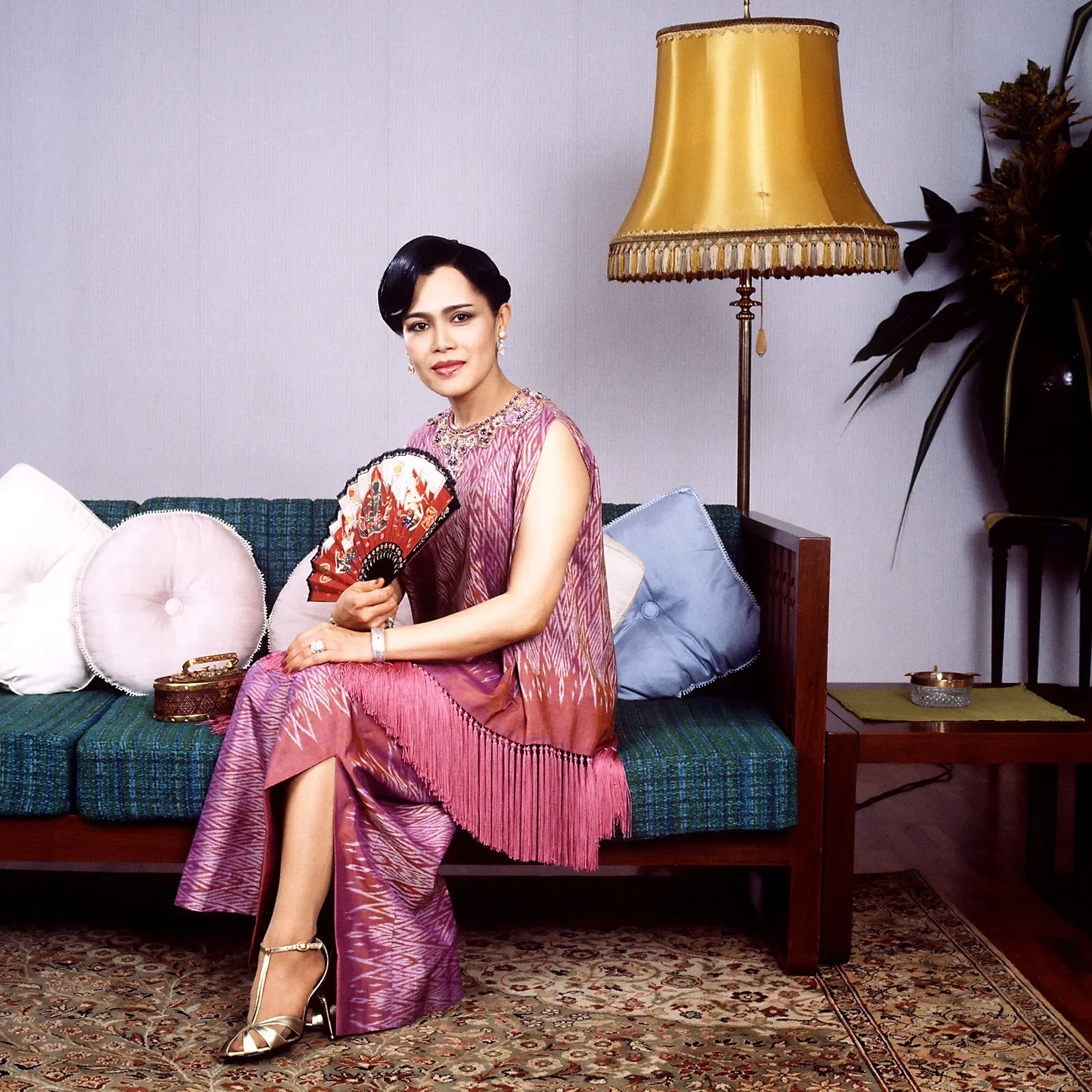Remembering Queen Sirikit: Fashioning a Nation’s Soft Power
The Moment that Wove a Nation
The year was 1960. The Cold War had drawn its lines across Asia.
As King Bhumibol Adulyadej and Queen Sirikit departed on a six-month world tour, they carried more than trunks of luggage. They carried the image of a nation seeking its place in the modern world.
In the Queen’s suitcases, each filled with hand-woven Thai silk tailored by Parisian designer Pierre Balmain, lay the threads of a new diplomacy built not on power but on grace.
Queen Sirikit in Thai silk ikat by Pierre Balmain
Photo Credit: Queen Sirikit Museum of Textiles
Soft Power in Motion
Long before the term soft power entered political vocabulary, Queen Sirikit embodied it. She understood that influence could come through attraction, and that culture could speak louder than command.
Her fashion was not ornamentation. It was language. Each gown declared that Thailand could be modern without losing its soul.
Soft power works when a nation’s culture, values, and identity become its most persuasive tools. For Thailand in the 1960s, a small kingdom navigating between empires, this form of diplomacy was both art and necessity.
Queen Sirikit in the same gown she ware at the Greek royal wedding gown, designed by Pierre Balmain, complemented pure twenty-carat gold, adorned with crystals and diamonds. This photo was taken at the Phiman Pathom Pavilion, Bangkok.
Photo Credit: Getty Images
Thailand Between East and West
The geopolitical environment was tense. Thailand had joined the Southeast Asia Treaty Organization in 1954, becoming a cornerstone of Western alliances in Southeast Asia.
At home, Field Marshal Sarit Thanarat’s government restored the monarchy as the country’s moral and unifying force after years of political upheaval. Abroad, Thailand remained largely undefined, seen as exotic but peripheral.
Queen Sirikit gave that image refinement and precision. Through her, Thailand became a story of poise, civility, and creativity.
A Cultural Debut
The 1960 tour was Thailand’s global debut. Fifteen countries, six months, and more than one thousand photographs captured a modern monarchy stepping confidently onto the world stage.
In Paris, Balmain cut Thai silks into tailored suits, cocktail dresses, and evening gowns whose colours drew from temple murals and whose textures came from the looms of the Northeast.
In Washington, her appearance captivated American media.
Life magazine called her “the Grace Kelly of the Orient.”
The New York Times wrote that “Thailand has found a new language, elegance.”
Each moment was a masterclass in visual diplomacy. In a world dominated by rhetoric and ideology, her quiet confidence did the talking.






The Eight Thai Dresses
The tour’s success inspired a national project at home. With historians and court seamstresses, Queen Sirikit created the chut thai phra ratchaniyom (the Royal Thai Dress) eight formal styles that drew from historic court attire yet were adapted for modern life.
These included Sivalai, Borompiman, Ruen Ton, Chakkri, Thai Chakkraphat, Chilada, Amarin, Dusit. They became Thailand’s sartorial language, much like the kimono for Japan or the sari for India.
Through them, cultural identity became modern, wearable, and recognisable around the world.
Eight Thai Dresses (Sivalai, Borompiman, Ruen Ton, Chakkri, Thai Chakkraphat, Chilada, Amarin, Dusit)
Photo Credit: Chobmai - Thailand Foundation
From Couture to Community
Fashion diplomacy soon evolved into social development. In 1976, Her Majesty founded the SUPPORT Foundation, the Foundation for the Promotion of Supplementary Occupations and Related Techniques.
It revived weaving and handicrafts across the countryside and created livelihoods for thousands of women. What began as royal elegance became rural empowerment.
Later, the Queen Sirikit Museum of Textiles was established in 2012 within the Grand Palace. It preserves her Balmain wardrobe and educates new generations about textile heritage, design, and diplomacy.
Since its founding in 1976, the SUPPORT Foundation has become a core national effort to preserve Thai local crafts and boost rural incomes.
According to the Royal Grand Palace website, the Foundation’s training centre, now known as the Queen Sirikit Institute, grew from a small tent in 1978 to a large facility with 23 specialised sections covering craft disciplines such as gold and silverware, damascene inlay, enamel work, woodcarving and beetle-wing decoration.
While comprehensive nationwide numbers (such as total artisans trained or cumulative income uplift) are not publicly tabulated in the referenced sources, the Institute and regional centres are described as having “helped improve the lives of the villagers while preserving Thai heritage,” suggesting thousands of rural households have been impacted over the decades.
Queen Sirikit in Balmain Blu silk and chiffon with silver lace overlay in Bangkok, 1962
Photo Credit: Paris-Match Marie Claire
Putting Thailand on the World Map
The results were visible at once. Thai silk exports rose sharply, tourism expanded, and Western designers began to source Thai fabrics.
The Queen’s image softened the perception of Thailand as a military-aligned ally and revealed a nation of refinement and artistic confidence. Her diplomacy built trust, not through speeches, but through authenticity.
In an era of ideological conflict, her fashion and grace became a form of quiet power that transcended politics.
Queen Sirikit in Daksin Palace, Narathiwat, Thailand
Photo Credit: Reginald Davis / Shutterstock
An Enduring Thread
Today, the strategies Queen Sirikit pioneered still underpin Thailand’s cultural diplomacy. Government programmes promoting the “Five Fs”, namely Food, Film, Fashion, Fighting, and Festivals, continue her belief that culture is influence. Thailand’s reputation for hospitality, craftsmanship, and design remains central to its global identity, and much of that identity was woven under her vision.
More than sixty years later, the gowns she wore on that historic tour still shimmer behind glass at the Queen Sirikit Museum of Textiles. They remain Thailand’s most eloquent ambassadors. Queen Sirikit did not merely wear Thai silk; she wielded it. Through beauty she built understanding. Through elegance she exercised influence. Her life proved that the softest power can leave the strongest mark.
Her legacy also offers enduring lessons for Thailand’s current pursuit of soft power. Her diplomacy was proactive, she did not wait for the world to discover Thailand, she carried its story forward through creativity and conviction. Her approach to representation transformed image into identity, showing that diplomacy is as much about how a nation presents itself as what it says.
Her commitment to persistence and institutionalisation ensured that what began as elegance evolved into empowerment. By founding the SUPPORT Foundation and later the Queen Sirikit Museum of Textiles, she converted inspiration into systems that preserve both livelihood and legacy.
As Thailand redefines its place in the world, the Queen Mother’s example remains a compass. True soft power endures when it is proactive, representative, persistent, and institutionalised, when beauty serves purpose, and culture becomes continuity.
In remembering Queen Sirikit, we remember not only the radiance of a queen, but the resilience of a nation she helped weave… thread by thread, and heart by heart…






